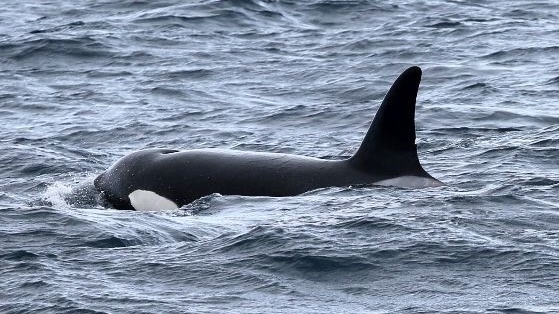Researchers from the University of British Columbia say they’ve identified a potentially new population of open-ocean orcas, that hunt the biggest predators on the planet.
In a study published Friday, researchers said a group of 49 orcas has been observed hunting sperm whales off the coast of California and Oregon.
Lead author Josh McInnes said in a news release that in one case the orcas were seen hunting a herd of nine adult sperm whales, “eventually making off with one.”
McInnes said it’s the first time killer whales have been reported to attack sperm whales on the West Coast.
“Other encounters include an attack on a Pygmy sperm whale, predation on a northern elephant seal and Risso’s dolphin, and what appeared to be a post-meal lull after scavenging a leatherback turtle,” said McInnes, who is a masters student in the UBC Institute for the Oceans and Fisheries.
Researchers said the orcas that were observed in nine encounters from 1997 to 2021 could either belong to a subpopulation of transient killer whales or a unique oceanic population.
The report said researchers were able to identify the orcas as possibly a new group partially because of bite scars on their bodies from the cookiecutter shark, a species of parasitic sharks that lives in the deep ocean.
McInnes said almost all of the orcas had the scars, while they haven’t been seen on other killer whales.
“But the big question is, where do these killer whales kind of fit in? We don’t know … but what we do know is that they represent a population that seems to spend more time in the open ocean,” McInnes said in an interview.
Co-author Andrew Trites from the UBC Institute for the Oceans and Fisheries said it’s “pretty unique” to find a new population of killer whales given the time needed to gather photos and recognize the animals as different than known populations.
Researchers said they also observed physical differences in the killer whales such as patches on their fins and saddle.
They said they hope to document more sightings and data from the new population in order to investigate exactly how different these orcas are from other documented populations.
McInnes said the discovery is the first part of a fun puzzle that they are working on.
“We’re just kind of at the tip of the iceberg of what these whales are doing. I mean, are they all one population? Are they multiple? We don’t know. So, I feel like this is kind of the big start of the next steps in our research, and to maybe get more sightings and more information,” said McInnes.
This report by The Canadian Press was first published March 15, 2024.




